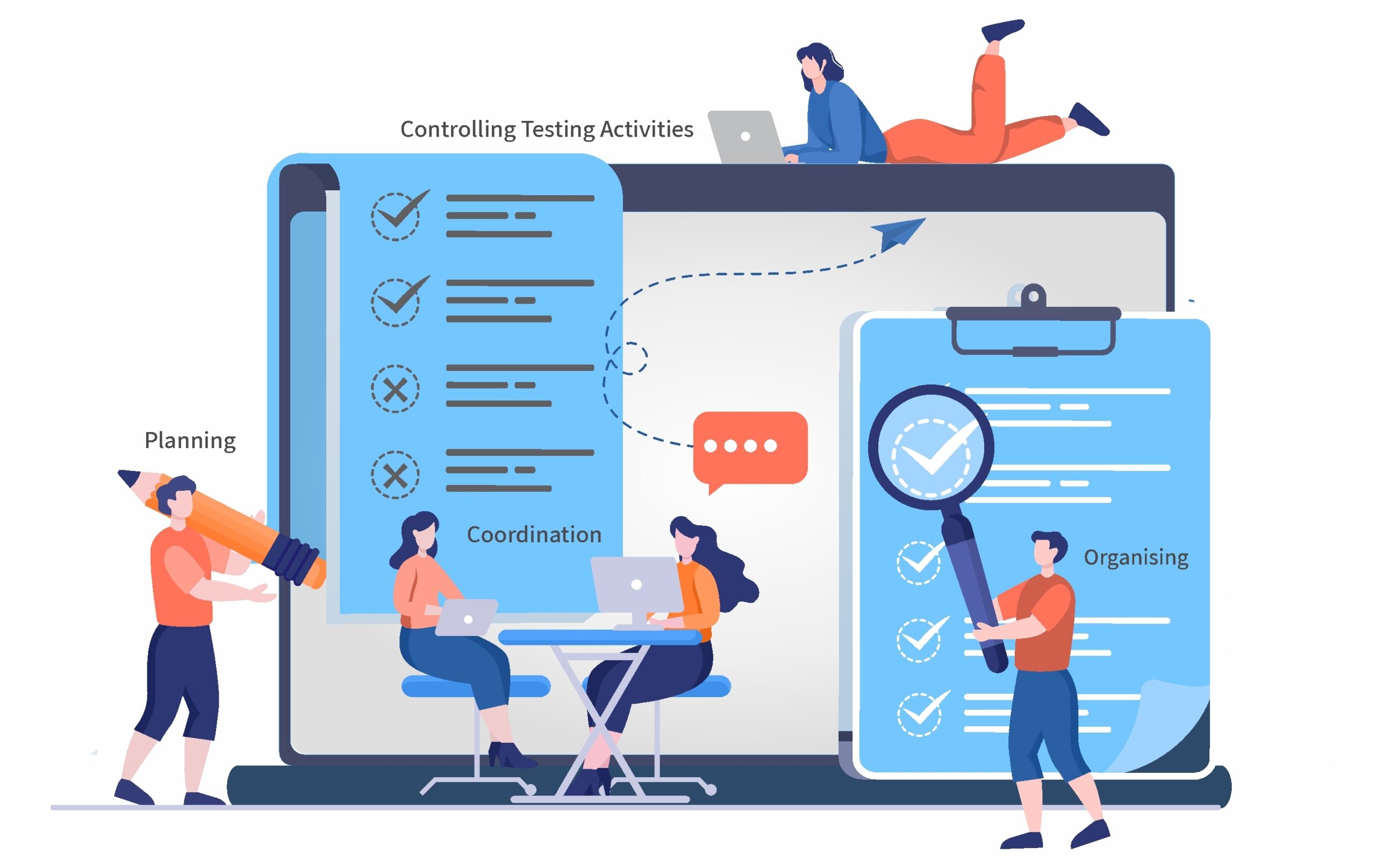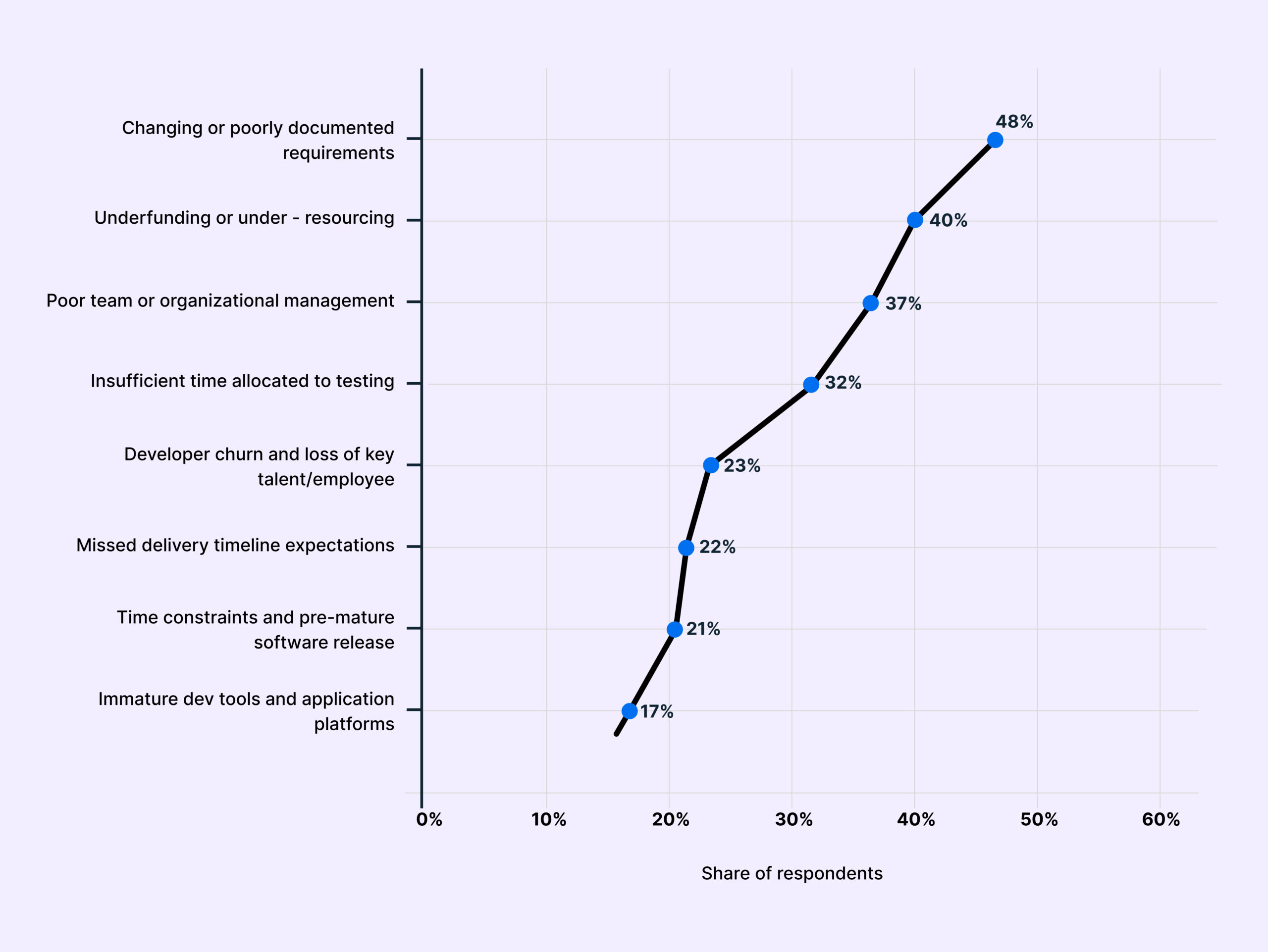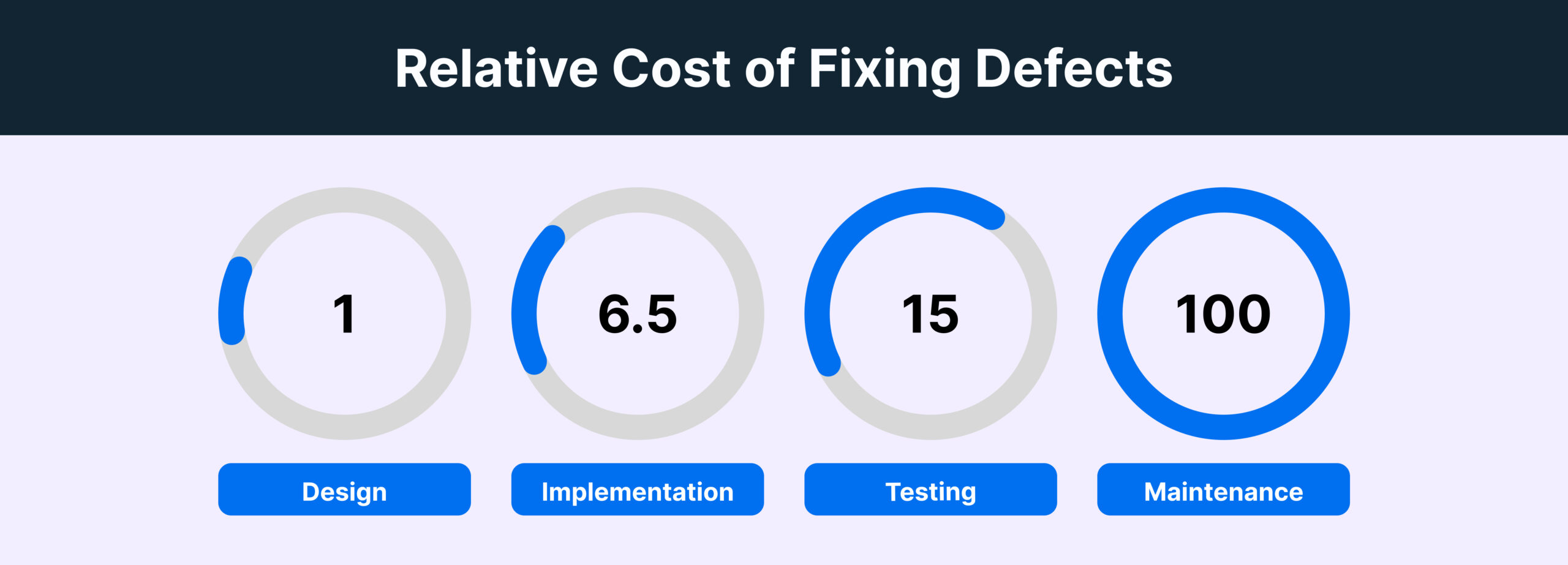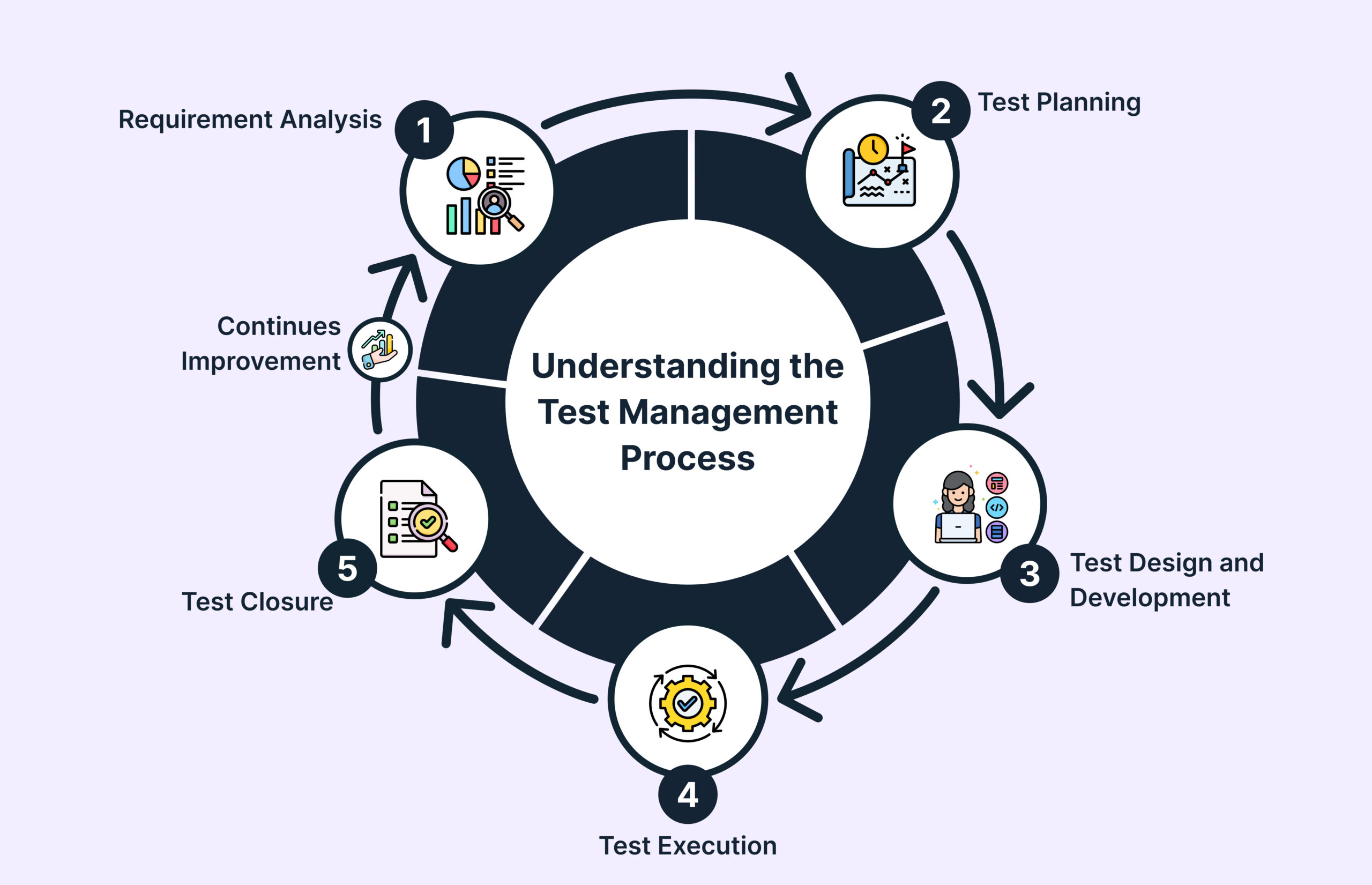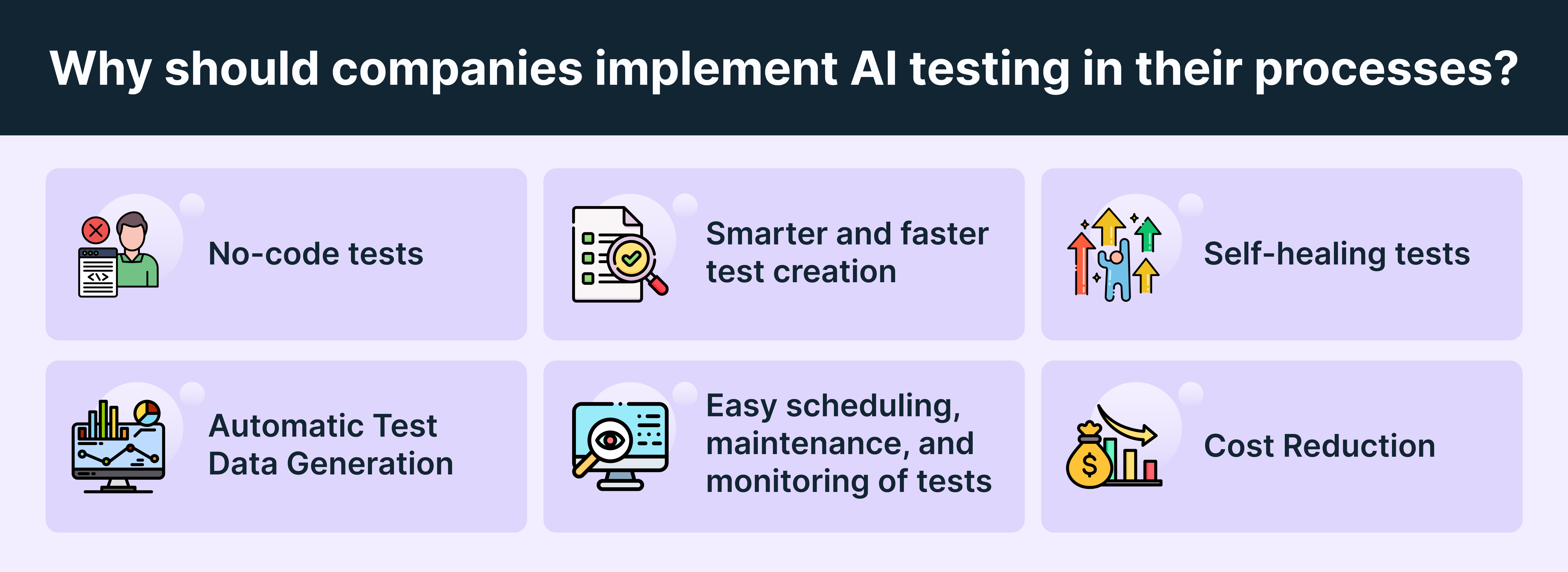What is Test Management?
What is Test Management?
Test Management is a process that requires proactive managing activities related to the testing of software. It involves planning, organizing, coordinating, and controlling testing activities for a software development project.
It aims to ensure high quality and reliability along with timely delivery of a software product. Test Management is performed using intricate tools like BrowserStack Test Management Tool. It allows you to closely monitor each step and keep track of different testing processes using a centralized dashboard.
Why is Test Management important?
A software project can fail due to poor documentation, insufficient time for testing, premature release, and under-resourcing as some of the core reasons. Poor Software quality costs nearly USD 2.41 Trillion each year in the US.
Did you know you can prevent common software project failure reasons by effective test management?
Test management is crucial for software development from an ROI perspective. It helps with:
- Faster release
- Improving User Churn Rate
- Efficient Resource Utilization
- Better Visibility and Control
- Cost-effectiveness
Faster release
Over 20% of developers cite time-related factors as common causes of software project failure. These include issues such as:
- Missed Delivery Timeline,
- Pre-Mature Release, and
- Insufficient Time allocated to testing
Test management speeds up the testing process, making it much more efficient, thus helping deliver a faster release of the software. Test planning and setting test case priority, make test execution faster.
Improving User Churn Rate
Software industry is highly competitive, and users expect a seamless bug-free user experience to continue using an application.
Did you know out of every 2 apps installed, 1 is uninstalled within the first 30 days due to lack of user experience.
With high churn rates, it is crucial to deliver high-quality software with an effective testing process to retain users.
Test management scrutinizes each process of testing in detail and aligns it with business requirements. A sophisticated test management system can help deliver a bug-free experience to the users.
Better Visibility and Control
Test Management allows project stakeholders to track progress, identify bottlenecks, and make informed decisions, especially for larger projects. It enables project managers to have better control over the testing activities.
Since QA is allocated almost over 50% of the total software development budget, having control over the process is crucial. Test Management allows you to have more organized documentation for seamless handovers, especially for long-running projects.
Efficient Resource Utilization
Test management involves planning and allocating resources effectively, including human resources, testing tools, and testing environments. This ensures that the testing process is conducted efficiently and that resources are used optimally, preventing wastage or under-resourcing from causing software project failure.
Cost-effectiveness
Did you know software bugs cause economic damage of $316 billion per year globally?
An effective test management system increases the chances of finding and fixing bugs in the testing stage. This helps save costs related to fixing defects by up to 85%. The faster the defect is caught, the lesser cost is incurred in fixing the defect.
Who needs Test Management?
Test Management is used for delivering high-quality software applications by:
- Developers, who perform unit testing and debug code based on test results, to deliver error-free code.
- QAs, who test the application using different testing techniques like functional, regression, usability, and cross browser testing to find bugs and document them in detailed Test Execution Reports.
- Product Managers, who foresee the entire software development lifecycle of the product and ensure optimum performance with faster delivery and high quality.
- Business Analysts, who ensure all the test cases are well aligned with the business requirements specs at every stage, keeping users’ interests in mind.
What are Test Management Tools?
A test management tool is a software application designed to help teams manage their software testing processes effectively. It provides a centralized location for storing and managing test cases, test scenarios, requirements, and defects.
Test management tools enable teams to:
- Create a Test Plan, Design, and Execute tests to efficiently manage the testing process.
- Track testing progress and identify issues quickly.
- View insights to understand the implementation level of the test plan and coverage of the business requirements.
Understanding the Test Management Process
Test Management process is a continuous process that takes place in different phases. Here are the different phases of the Test Management Process:
- Requirement Analysis
- Test Planning
- Test Design and Development
- Test Execution
- Test Closure
1. Requirement Analysis
Understanding the requirements and establishing clear testing objectives before starting the process.
- Risk Analysis: Identifying and assessing potential risks in the project at various levels.
- Test Estimation: Determining the effort and resources required for testing.
2. Test Planning
Define the overall testing strategy and approach by understanding project requirements and objectives.
- Define Scope and Pre-requisites: Identify test levels like Unit Testing, Integration Testing, System Testing, etc. Determine testing resources like tools, and environments.
- Document a test plan outlining the testing strategy, scope, schedule, and deliverables.
3. Test Design & Development
Create test cases with detailed test steps based on the Test plan. Write Test Scripts for the test cases.
- Define Test Scenarios: Identify test scenarios based on the business requirements and specifications.
- Create Test Cases: Based on the test scenarios, create test cases that can check the application on different levels i.e. functional and non-functional.
- Write Test Steps: For the given test cases, write detailed and clear test steps that should be followed to run the test cases. Mention the expected results for each test case and compare actual results to declare a test case pass or fail.
- Write Test Scripts: For automated tests, write test scripts based on the given test cases to run in the selected test framework such as Selenium, Cypress, Appium.
4. Test Execution
Set up testing environment and execute test cases using prescribed frameworks, tools, and techniques.
- Set up Environment: Configure test tools and set up hardware, software, and network configurations.
- Execute Test Cases: Run test cases manually or using automated testing tools, record test results and document any defects found.
- Monitor and manage test execution: Ensure faster test execution with Test Case Prioritization, where crucial tests are run before others.
5. Test Closure
Track defects, consolidate testing activities in Test Execution Report, and find opportunities on continuous improvement.
- Track Defects: Log all the defects, prioritize them as per criticality and track them to resolve defects efficiently.
- Create Test Report: Summarize testing activities in proper reports and evaluate test completion against the test plan.
- Continuous Improvement: Conduct a retrospective analysis of the testing process, document the learnings, and identify opportunities for process improvement.
How to perform Test Management using BrowserStack Test Management Tool
BrowserStack Test Management is an AI-powered, integrated platform that streamlines test case creation, execution, and automation. It enables up to 90% faster test authoring and improves test coverage by 50%.
With real-time visibility via customizable dashboards, advanced AI agents, and seamless integrations, it optimizes workflows for both manual and automated tests. Designed for teams of all sizes, it ensures secure data handling while supporting high-quality, efficient software delivery.
Key Features of BrowserStack Test Management:
- AI-Powered Test Case Creation: Automatically generates detailed test cases from Product Requirement Documents (PRDs), user stories, or text prompts. Suggests enhancements to existing tests to reduce manual effort.
- Test Deduplication Agent: Identifies duplicate or semantically similar test cases and recommends merging or removal to keep the test suite organized and efficient.
- Low-Code Automated Test Authoring: Converts manual test cases into low-code automated tests, enabling faster automation adoption without requiring extensive coding knowledge.
- Intelligent Test Selection Agent: Uses AI to identify and recommend the most critical test cases for execution, optimizing test runs and coverage.
- Unified Test Management: Centralizes all manual and automated tests in a single platform with traceability from requirements to defects and integrations with tools like Jira and Azure DevOps.
- Dashboard Analytics: Provides customizable dashboards to track real-time progress, monitor trends, and visualize key testing metrics including automation coverage.
- AI-Powered Jira Integration: Synchronizes test cases and executions between BrowserStack Test Management and Jira for bi-directional updates with AI assistance.
- Streamlined Manual and Automated Test Runs: Plan and execute test runs across manual and automated tests. Supports dynamic test inclusion and uploading automation results from frameworks like JUnit and BDD-JSON.
- Support for Automation Frameworks & CI/CD Tools: Integrates with popular frameworks such as Appium, Playwright, TestNG, and CI/CD platforms like Jenkins, Azure Pipelines, and Bamboo for scalable automation workflows.
The free version of BrowserStack Test Management provides unlimited test cases, robust integrations, and real-time reporting to help teams get started quickly.
Try BrowserStack Test Management
Create/Import Test Cases
BrowserStack Test Management allows you to migrate your existing project data from TestRail or Zephyr Scale by selecting “Quick Import”.
Also, you can import data from CSV by selecting “Start from Scratch” or write test cases from scratch within the BrowserStack Test Management Tool.
Manage Test Cases
You can manage your existing test suite or create a new one from scratch using BrowserStack Test Management using simple steps:
1. To create a new Project in Test Management, Select Create Project > Enter Project Name and Description > Click Create Project.
2. To create a New Folder within a Project, Select Test Cases > Create Folder. You can add test cases within the folder.
3. To create Test Case within a Folder in Test Management Tool add all details and click Create.
4. You can also Import via TestRail, Zephyr Scale or CSV.
You can copy or move, edit or delete test cases to manage them better. Also, BrowserStack Test Management allows you to apply filters to test cases for efficient test case management.
Run Test Cases
BrowserStack Test Management tool enables you to run manual and automated test cases. You can integrate test case ID tagging with test suites for better visibility and tracking of individual test cases.
Try BrowserStack Test Management
You can also run critical test cases by assigning Priority of Test Cases using Custom Configurations in Test Run.
Best Practices for Seamless Test Management
Some of the key best practices for creating effective test management are:
- Identify risks early in the project to develop mitigation plans in time.
- Develop a detailed test plan that outlines the testing strategy, scope, objectives, resources, schedule, and entry/exit criteria.
- Establish clear communication channels among team members, ensuring that information is shared transparently and regularly.
- Create well-defined test cases that are easy to understand, execute, and maintain.
- Ensure the test cases cover all relevant scenarios.
- Use Test Case Management for executing all the Test Cases efficiently with a faster turnaround time.
- Set up and maintain stable and representative test environments that mimic production conditions as closely as possible.
- Use a robust defect tracking system to log, prioritize, and manage defects.
- Implement tools and practices to track key metrics and generate regular reports.
- Use Test case prioritization effectively to run critical tests first and use resources optimally.
- Consider factors such as criticality, frequency of use, and impact on end-users while prioritizing test cases.
- Manage test data effectively, providing maximum test coverage.
- Maintain comprehensive documentation, including test plans, test cases, and test results.
- Establish a feedback loop to capture insights from each testing phase and adapt processes accordingly for continuous improvement.
Conclusion
Test Management is fundamental to make software development process efficient. It ensures faster release, better quality, efficient utilization of resources and enhanced cost-effectiveness.
Using tools like Browserstack Test Management you can create, manage and track manual and automated test cases with its integrated end-to-end workflows and dashboards. You can maintain a centralized repository for all your manual and automated test cases for better visibility and control over the testing process.
By having an effective test management system you can enhance software delivery process at multiple levels.
